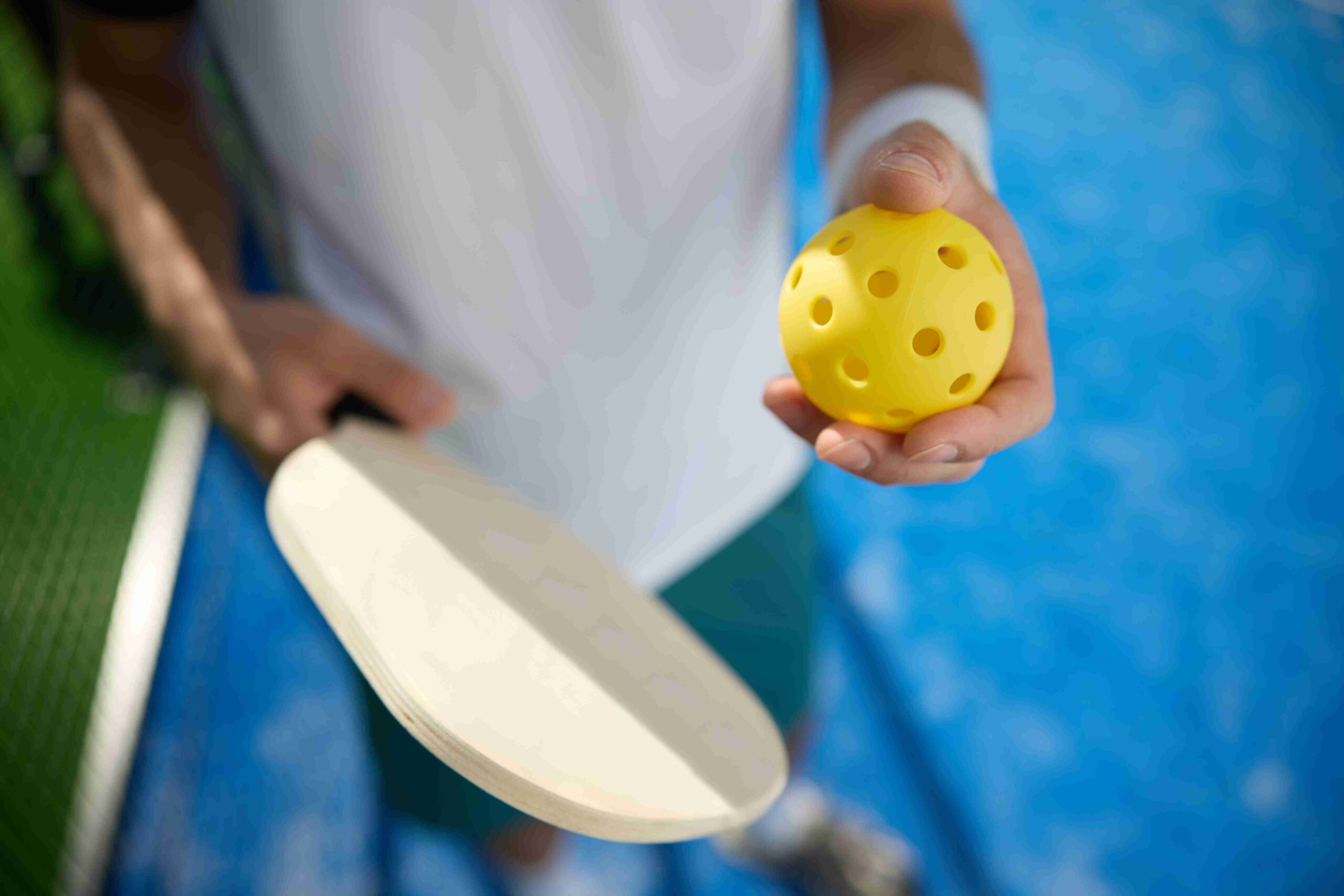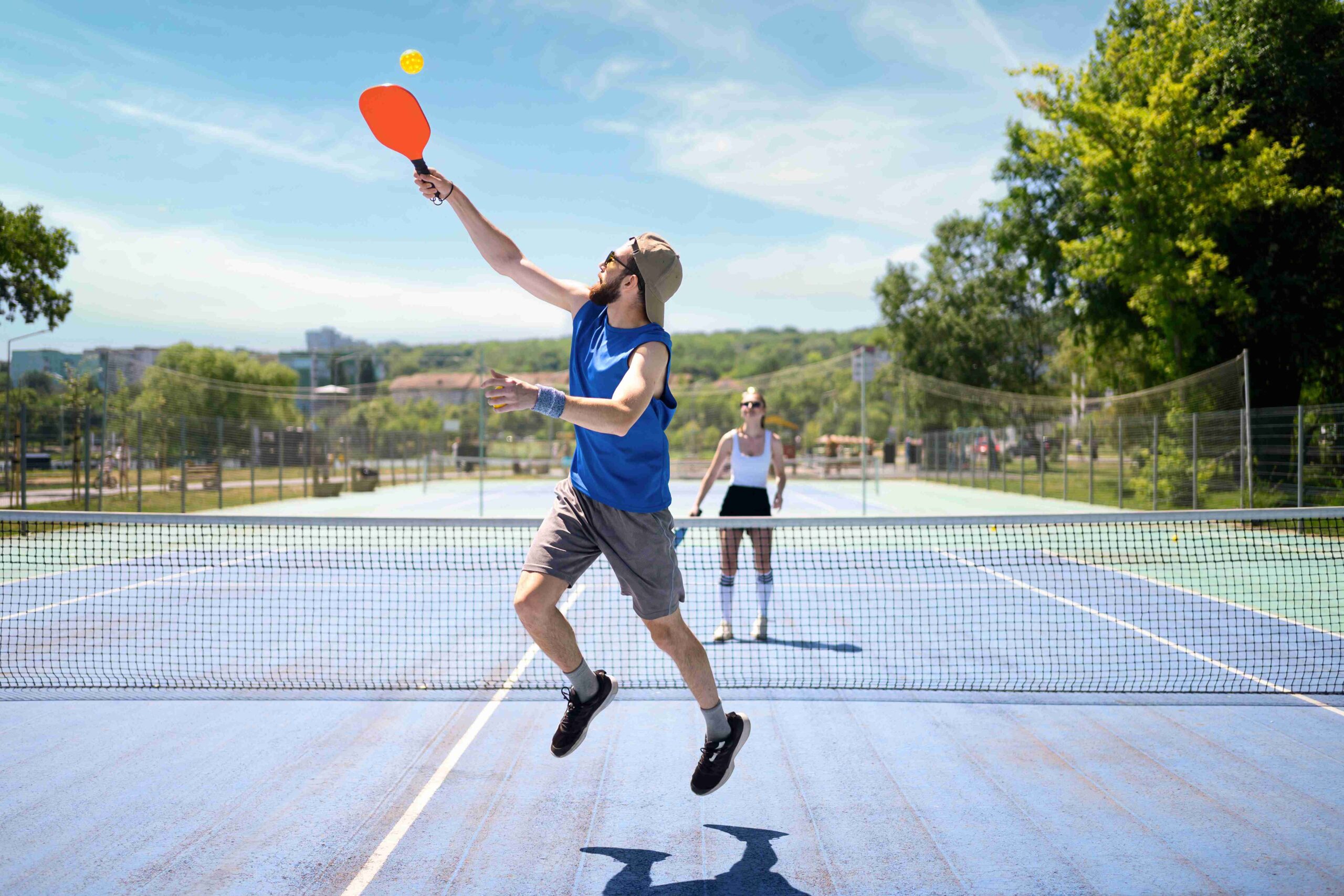Pickleball is a dynamic sport that combines elements of tennis, table tennis, and badminton. Today, it is rapidly gaining popularity worldwide, but its history began much more modestly—with a friendly game in the yard in 1965.

How Pickleball Was Born
The history of Pickleball began in the summer of 1965 on Bainbridge Island in Washington State. The families of Joel Pritchard and his friend Bill Bell returned home after a game of golf and found their children bored. The parents decided to entertain them and tried a game of badminton, but couldn’t find a shuttlecock. As a result, they started improvising using table tennis rackets and a plastic ball with holes.
Gradually, the rules of the game began to take shape: the badminton net was dropped, and wooden paddles began to be replaced by more comfortable versions. Soon neighbor Barney McCallum joined the process and helped improve the game. They experimented with different materials for rackets, tested different types of balls, and refined the rules.
Within a few years, Pickleball became a popular game in the surrounding neighborhoods, and in 1967, the first dedicated court was built.
Toward a Professional Sport

In 1972, Pickleball was officially named Pickleball and registered as a trademark. By this time, interest in the game had already spread beyond Washington, D.C., and it soon spread to other states. In 1984, the U.S.A. Pickleball Association (now USA Pickleball) was formed, which developed an official set of rules and began organizing the first tournaments.
By 1990, Pickleball was played in all 50 U.S. states. In 2001, it was introduced at the Arizona Senior Olympics, which brought it to the attention of the older generation. In 2008 Pickleball was included in the U.S. Senior Olympics, and in 2009 the first U.S. National Pickleball Championship was held.
Each year, the sport has gained momentum, attracting new players and expanding its audience.
Entering the World Stage
In recent years, Pickleball has experienced a real boom. In 2019, the first professional tours appeared, and in 2021, Pickleball was officially recognized as a state sport in Washington. According to the Sports and Fitness Industry Association (SFIA), the number of players in the U.S. increased by 223.5% in three years, with 13.6 million people already playing Pickleball in 2023.
The COVID-19 pandemic contributed to the rise in popularity—people were looking for safe ways to be active, and Pickleball proved to be the perfect option. In 2021, Major League Pickleball came into being, with famous athletes such as LeBron James and Drew Brees investing in its development.
Today, Pickleball is actively developing outside of the United States. According to the analytical company DUPR, Canada, Australia, Great Britain and Malaysia have joined the leading countries in terms of the number of players. India, Thailand, Venezuela, China, Venezuela, China and the Philippines are also in the top 5 fastest growing markets.
Pickleball is no longer just a recreational game—it is a full-fledged sport with its own infrastructure, tournaments, and millions of fans around the world.
